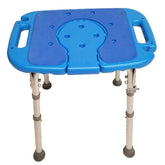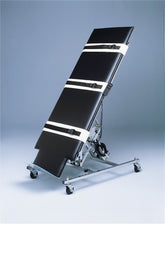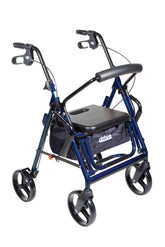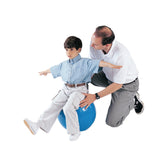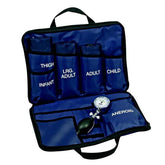
Hot & Cold Pack for Sports Injuries: When to Apply Heat and When to Ice
Sports injuries are not exclusive to athletes. They can occur whenever someone is engaging in some sort of physical activity, from patients in their own home to clients in a clinic. Injuries can happen after an instant while performing a simple exercise, and the next moment there may be swelling and soreness that warrants immediate care. Knowing when to apply heat or ice can mean the difference between a smooth complication-free recovery, and lingering discomfort. For caregiver professionals, clinicians, and home care agencies this is not just helpful; it is a necessary and useful skill.
Cold and heat do very different things for the body, so applying them correctly is critical. Cold therapy helps control inflammation and dull pain immediately after an injury, while heat therapy loosens tight muscles, increases circulation, and eases stiffness.
Using the wrong approach can slow healing, which is why understanding the timing and purpose of each is key to effective care.
Cold Therapy: Reducing Swelling Right Away
Cold therapy works best on injuries that happen suddenly. Sprains, strains, or bruises often trigger inflammation, and applying ice quickly can prevent the swelling from getting out of hand. Cold constricts blood vessels, which reduces fluid buildup and numbs pain.
Products such as Sombra Cool Pain Relief Roll-On simplify the task. A smaller, more targeted applicator allows caregivers to target sore areas quickly. For example, if a patient twists their ankle during a session, a roll-on reduces discomfort and swelling in seconds.
For larger areas, Sub Zero Gel offers flexibility. You can use a 4 oz tube at home or a 1-gallon pump in a clinic to treat multiple patients efficiently. Both options are easy to use and let caregivers act fast, which is often the difference between a minor setback and a prolonged recovery.
Heat Therapy: Loosening Muscles and Relieving Tension
Heat therapy is most beneficial after inflammation has calmed down and for chronic pain, tight muscles, and stiffness that have not resulted from acute injury. Heat increases blood flow and relaxes the tissues, making movement easier and less painful. Sombra's Warm Pain Relief is perfect for localized areas of pain. A caregiver can use a roll-on application on their shoulder after receiving treatment, or use a jar for their back after being active in the sun. Heat decreases soreness in muscle tissues and helps the patient to engage in exercise or daily activity with less effort and more comfortably, assisting with quicker and safer recovery.
Using heat prior to activity has benefits that prevent an injury from occurring. Warmed-up and looser muscle tissues are less prone to strain during an activity, so implementing heat regularly can decrease repeat injuries.
Alternating Cold and Heat for Best Results
In some cases, the best practice is to combine both types of therapy. Utilize cold to manage acute swelling initially and then heat to relieve muscle tightness and restore mobility. Alternating can be a beneficial practice and especially useful with conditions like repetitive strain injuries or when lingering soreness is noted due to overuse.
The Tiger Tail Hot/Cold Water Bag works well for this purpose because it's very flexible and wraps comfortably around the back, knees, or shoulders, and you can easily switch from ice to warm water without getting out of the therapy. Having something like this in your toolbox is beneficial for a caregiver, as you can manage one of the therapies more efficiently while addressing the other patient's potential needs.
Timing and Duration Matter
Cold therapy is typically recommended to be applied for 15–20 minutes at a time, using a cloth or barrier to protect the skin. Heat therapy may be used slightly longer, for 20–30 minutes; however, you will want to pay attention to any signs of irritation. When alternating between heat and cold therapy, be sure to allow the body tissue time to adjust for maximum benefit, as needed.
Quick gels such as Point Relief ColdSpot Lotion are helpful for on-the-spot relief, and a short roll-on just after the therapy session or during workouts slightly lessens soreness without too much bulk from actual packs, which is helpful for caregivers to consistently roll on the gel for clients.
Choosing the Right Product
Not every hot or cold product is appropriate for each patient. Larger water bags, such as the Tiger Tail, can envelop large muscle groups, while smaller gels or roll-ons may be better suited for smaller joint areas or for those who experience localized discomfort.
Using a combination will always be the best approach (e.g., a patient recovering from a shoulder strain might start with accommodations of the Tiger Tail hot/cold water bag to heat up the musculature before group exercises and use the Sub Zero Gel or Sombra Cool Pain Relief afterwards to lessen swelling after activity). This approach is practical, efficient, and can be easily completed at home or in your clinical setting.
Safety First
Even simple therapies need careful consideration. Cold should never be applied directly to dry skin, and heat should not be used at high temperatures. Individuals with diabetes, poor circulation, or sensory impairments require additional supervision. Clear guidance for both patients and caregivers will help ensure that the therapy is safe and effective.
Using Therapy for Prevention and Recovery
Hot and cold therapy can also prevent injuries rather than only reacting to them. Heat applied before an activity will loosen the muscles, and follow up with cold application afterwards to reduce inflammation. It is also helpful to work therapeutic modalities into a routine, where the patient establishes the habit of using them regularly, rather than just when they have pain or discomfort. This routine assists with range of motion in the joints, decreases pain, and keeps the patient active without an exacerbation of symptoms.
It is beneficial that multiple modalities are available to make it practical. A combination of a Tiger Tail Hot/Cold Water Bag, Sombra Warm Pain Relief, and Point Relief ColdSpot Lotion allows the caregiver to treat an acute injury, decrease post-activity soreness, and ease chronic tension.
When to Seek Professional Care
Some injuries demand something beyond hot or cold packs. Ongoing swelling, significant pain, or injuries that aren’t better after a few days should be seen by someone in health care. In many of these situations hot and cold therapy is a good adjunct to medical care which promotes comfort and assists rehabilitation.
Knowledge of when and how to apply heat or cold is useful for both clinicians and family caregivers, as it can promote faster healing, speed recovery from injury, and enable proactive care. Patients feel supported and carers are reassured in their interventions.
Takeaway
Cold therapy helps decrease swelling while numbing acute pain. Heat, on the other hand, relaxes muscles, promotes circulation and alleviates stiffness. Using both cold and heat will promote healing, prevent complications and maintain activity.
Having equipment that works well and is of good quality makes a big difference. Tiger Tail Hot/Cold Water Bags, Sombra Warm and Cool Pain Relief, and Point Relief ColdSpot Lotion are all solid, easy to use, and work well.
For caregivers and clinicians, having these products from Cathedral Ledge Medical Supplies ensures readiness for almost any sports injury scenario. Timely, accurate interventions enable patients to heal sooner, remain active, and be as comfortable as possible during the healing process.

